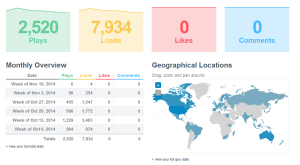Now that the web design MOOC (Massive Open Online Course) is concluded, I wanted to share some final thoughts. I also thought it would be appropriate to indicate overall success rates.
First – for those who are curious, we ended up with a little over 660 students in the class at the end. Of those, roughly 13% finished the course and were awarded badges and certificates of completion. While that number may seem low, it is actually almost twice the average completion rate for MOOCs (7%).Keep in mind that I do not have ready access to the administrative funcitons within the Adobe Education Exchange so I can not see all the requisite details only the total numbers.
That being said, I question if the completion rate really matters all that much. I know some participants were looking for the basics of how to use the technology in question (MUSE). I know that many indicated they were pressed for time. The only way one could complete the course would be to formally submit all assignments and rate and comment on at least 3 other assignments. I do know that a large number viewed all my videos. Given I have only used my Vimeo account for this web design class (with a few minor exceptions), the numbers below convey a sense of how many times the class participants viewed my videos (and their geographic locations). Keep in mind there were less than 700 in the class. The geographic reach is similar to the geographic reach previously reported for class participants. This tells me that a large number viewed the materials even if they did not complete all the assignments.
Now for some final thoughts. First and foremost, teaching a MOOC is a team effort. Given the number of timezones represented, it is important to have people in various timezones who can help. I am so grateful for the help from Greg Hodgson (London vicinity) and Jason Carthew (Sydney vicinity). I don’t think it would have been possible to teach this course alone.
As mentioned in my previous post on technology, one must be very proficient at numerous technologies (not just literate, but fluent). One must know what potential problems may arise and be prepared to deal with them. If you are only literate, you will likely not anticipate nearly as many issues as if you are fluent with these technologies.
It is important to stay on top of all the information (which will arrive in a number of different formats – for example, eMail, discussion forum posts, and Twitter).
I must say the biggest benefit of teaching this class was being able to meet so many interesting and passionate educators. I am honored that you took the time to participate in the class and I do hope you learned a lot. It was really nice that so many of you commented on how much you learned and that you appreciated my style as a teacher. The kind words really mean a lot.
I do hope there is an opportunity to teach additional classes on web design and development in this format. I believe that this venue provides an opportunity to reach many individuals who are simply too busy to take a more traditional class. As always, I look forward to your comments.


